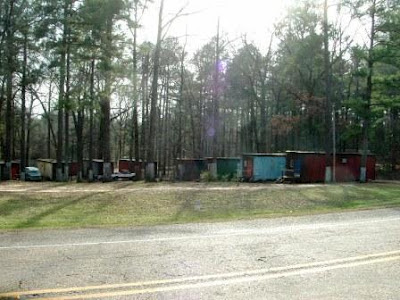March 25, 2012—I think we gave Garmina a nervous breakdown. At least, that's one explanation for why she has "died."
Throughout our journeys, we relied on Garmina, our Garmin GPS system, to get us from point A to point B or C. She did a fine job—for the most part. At times, though, she was exasperating and she would get confused.
Texas especially was trying for Garmina.
In Texas, at least in the metropolitan areas around San Antonio, Austin, and Dallas, Texas builds its interstates with a series of usually one-way access roads that run parallel to the main road. These roads are not called access roads, however. They usually have another name. And they usually run next to the limited-access highway for miles.
Despite the economy (or maybe in spite of it or even because of it), Texas has continued to build and "improve" its highways. So there was always construction, and that caused Garmina further confusion. Garmina would tell us to get on the highway (which we would do), then a few minutes later, she would "recalculate," believing that we were still on an access road!
Driving in Texas was tough on her.
Sometimes, too, we would deliberately change our mind about a destination, sometimes because we decided on the spur of the moment to go another way, or sometimes because we just needed to stop at a store we had seen. Again, she would "recalculate" until we shut her off.
There were a few times that she sent us in the wrong direction, like the time in Mississippi when we were looking for a specific RV park. She took us down a dirt road around an oxbow lake. I wasn't too keen on that trek, because there was no place to turn around. Fortunately, we came out on a highway and were able to get back to where we wanted to go.
On our last day of traveling, we noticed that Garmina wasn't feeling well. Although she was plugged in, she kept beeping at us, telling us that she was unplugged and that her battery was low. We initially thought perhaps the connection was just loose. Not so.
Yesterday while we were in the car, she just plain refused to work. She finally died. Cause of death: her battery.
I've ordered a battery to recharge her, but we've decided that Garmina would be relegated to local traveling only. We've ordered a new Garmina, which comes with live traffic updates and free map updates for as long as we own it. We'll get the new only next week.
Thank you, Garmina, for getting us around so well. We'll try to be kinder to your sister.
Until next time,
Linda






















